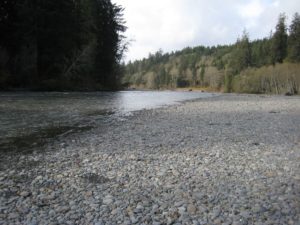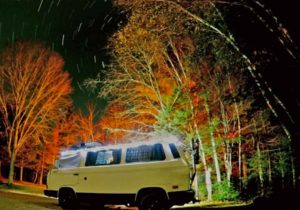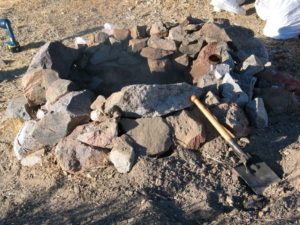
Dispersed camping is legally camping on publicly owned land that allows dispersed camping. . It’s often referred to as boondocking. This isn’t to be confused with stealth camping which is basically just parking to sleep. Stealth camping is basically camping in places that camping isn’t allowed such as city streets, private property, and posted no camping spots.
Wal-Mart parking lots aren’t boondocking but can come in handy when trying to get as much driving in as possible. Since WalMart doesn’t specifically allow or ban camping in the parking lot it isn’t really stealth camping either.
If police find that you are stealth camping in many locations they may wake you from your nightly slumber with a Mag-Lite tapping on the window. After running your identification looking for warrants they will send you on your way with a warning not to do it again. Sleeping in your vehicle is against the law in many towns and cities.
Sometimes fee-based campsites are just full or maybe you don’t want the constant noise of cars driving in circles all night, or smelly toilets, or the drone of generators running all night and day. Others find $45.00 campsite fees to be too high and prefer the solitude dispersed camping provides.
National Forests and Bureau of Land Management are the biggest public lands that allow boondocking. There’s typically no electricity, no water, no picnic tables, and no bathrooms in these non-maintained places which makes them much different from their fee-based pay to stay campgrounds.

The United States Forest Service controls the National Forest land and mostly allows dispersed camping meaning you can camp anywhere there is already a fire ring. Land controlled by the Bureau of Land Management works much the same way. If there is no sign saying ‘No Camping’ then it is generally allowed. Overnight camping is not allowed at trailheads, picnic areas, day-use parking areas, and ‘No Overnight Parking’ areas.
National Parks, however, have a much more strict approach to where you can camp, and camping is generally only allowed in the designated pay site areas. State Parks are much the same way. State park’s policies will, of course, vary state by state but align with those of National Parks where camping is only allowed in designated fee-based campgrounds.
National Forests and Bureau of Land Management all have very detailed maps available. These maps show the public land as well as surrounding privately owned lands and all the major roads and even some smaller unmaintained logging roads. Some useful maps are the Tom Harrison maps line and the National Geographic line of maps. Having detailed maps of highways, roads, trails, and other landmarks such as buildlings, railways, and borders.

Look through these maps and plot a destination. Most often there are campsites scattered all along these roads, some which don’t have a name but have been allocated a number. America’s public lands offer thousands of wonderful places to boondock camp. Some of the best spots require a map and a couple miles of dirt road to get there.
National Wildlife Refuges sometimes have designated camping areas but do not allow dispersed camping so as not to disturb wildlife. Photographers and others interested in wildlife may get scenic views and rare glimpses of wildlife but have to do so while camping in dedicated fee-based campgrounds.
Some areas are simply not conducive to boondock camping. Major cities and heavily used areas often are ‘No Overnight Parking’ areas and also heavily patrolled. Private property and lack of suitable spots make boondocking in some areas very difficult. California along the coast has laws against overnight parking specifically to address this type of camping. Along both American coasts, there are many beautiful sites but few places for boondocking making designated campgrounds the norm.
Don’t be afraid to explore the country and utilize the thousands of campsites that are available for free. Sometimes you have to stay in a designated campground, sometimes you don’t. Either way you are outdoors, on the road, and enjoying what the outdoors and open road has to offer.
 Transporter Magazine Volkswagen Vans Volkswagen Vans Tin Tops High Tops Westfalia and More
Transporter Magazine Volkswagen Vans Volkswagen Vans Tin Tops High Tops Westfalia and More




You must be logged in to post a comment.